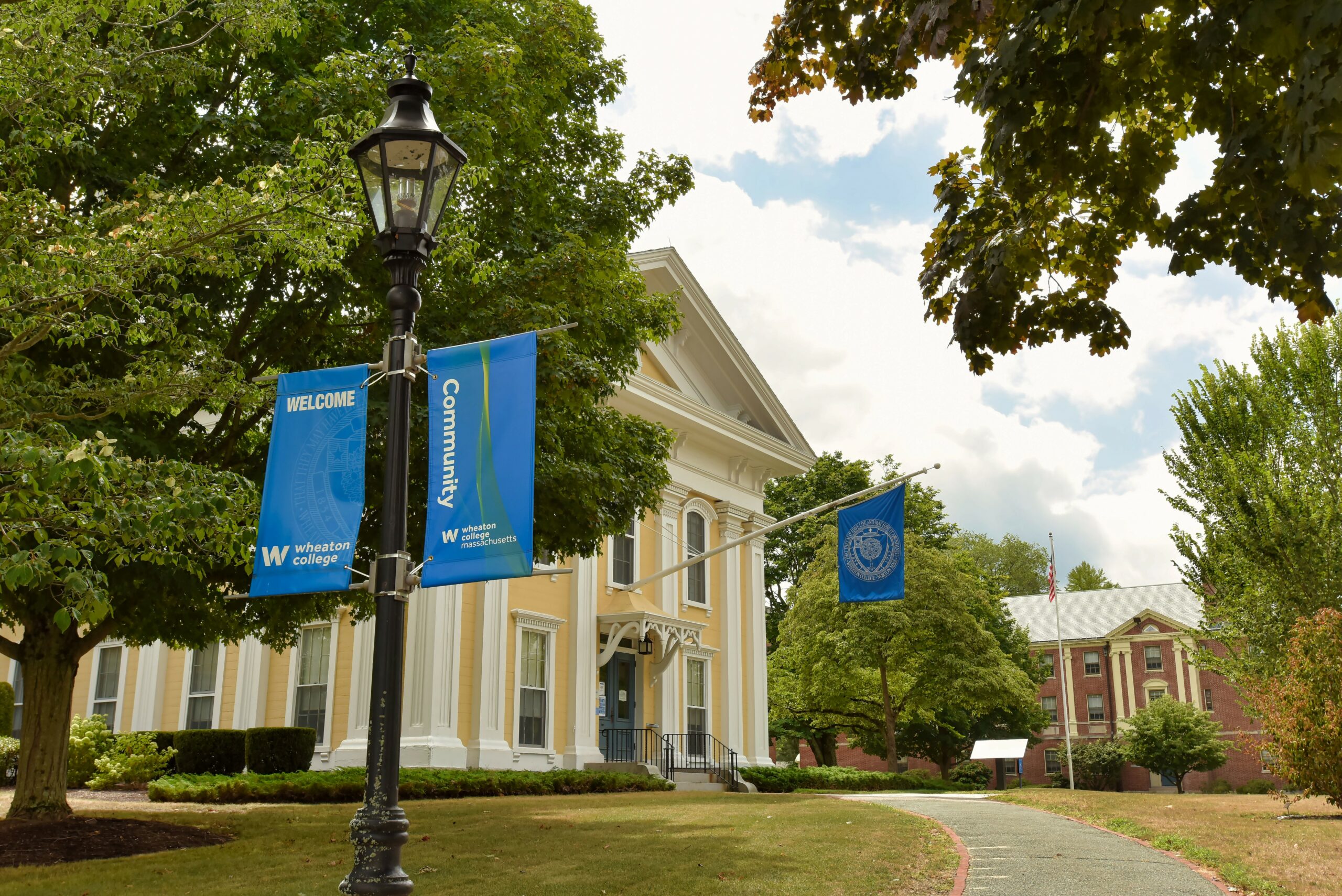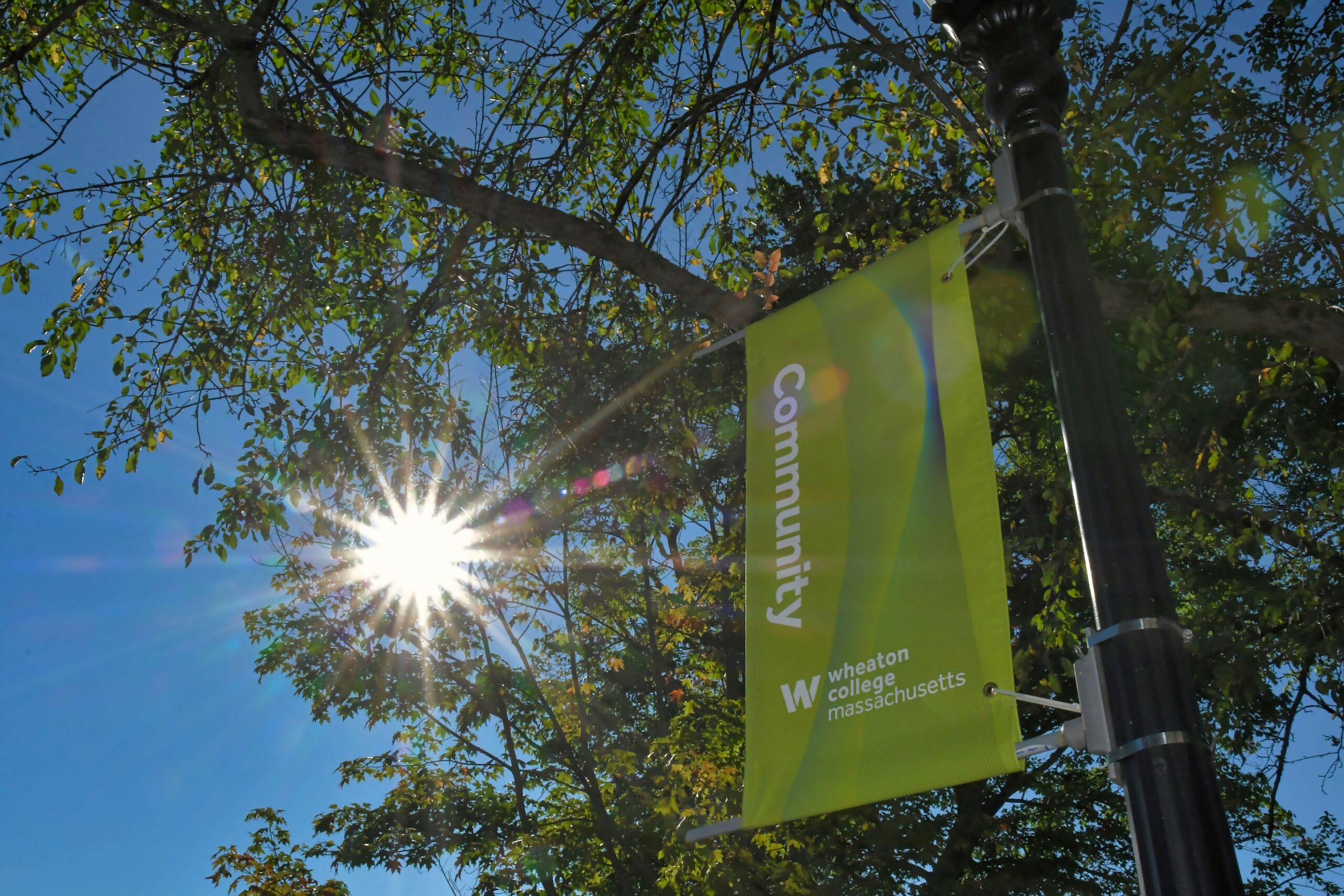A century-old building wrapped in white siding sits on the corner of Howard and East Main Streets in Norton, Mass., a traditional structure highlighted by dark green shutters in the heart of New England, about 40 miles south of Boston.
In a word, this home is welcoming. For years, it served several functions for Wheaton College, including a term as a residence for male exchange students. But for the past 25, it has been a gathering place for students of color. Known as the Marshall Center for Intercultural Learning, it is named for former President Dale Rogers Marshall, herself a champion of diversity and inclusion.
This special place is an entry point for many of the students from different backgrounds to start their college journey, where they can collaborate and share cultural perspectives and viewpoints in a safe environment. Coming through the kitchen, they meet in a comfortable room to engage in respectful civil discourse, getting a chance to be heard without interruption.
These days, true two-way conversations are rare. Heightened emotion around the three Ps—pandemic, protests and politics—have made such discussions an extreme challenge. But not at Wheaton.
Leaders at the Marshall Center a few years back launched Intergroup Dialogues that help to build trust among students who participate. These 10-week programs enhance listen-and-learn skills, showcase different cultures and teach students how to respond without overreacting.
“They come together, get to know one another, do a cultural artifact project and start to talk about themselves and how they identify,” says Raquel Ramos, Dean for the Marshall Center. “We spend a long time talking about communication agreements and aspirations. How do we want to be in this space? What needs to be present for you to feel totally comfortable sharing your views? The nature of building trust over time, I think is what makes it successful. You can’t rush through a dialogue. You can’t do a crash course and do it in a month. After they’ve spent weeks building trust, then they can dive into hot topics.”
Ramos says creating that environment is only successful if the pool of participants is diverse.
“It has to be a group of students made up of various social identities,” she says. “We can’t do an effective dialogue in an echo chamber of people who all think the same or identify in the same way.”
Wheaton College, a small private institution founded in 1834 that now has 1,700 students and a brand new president in Michaele Whalen (the former provost at Emerson College), has seen that pool of incoming students become more diverse through the years. About 27% are students of color, with another 7-10% are international students. Nearly a quarter are first-generation students.
“On the surface, it is a predominantly white institution, and you definitely feel that,” Ramos says. “But as alums come back, they say, wow, it looks really different.”
Getting students acclimated early
One of the hallmarks of the development of Wheaton College’s new student base is an early arrival program that allows them to get familiar with the university, the culture and expectations. About 30-40% of students of color take advantage of the program. Wheaton also has options for other identities, such as LGBTQ and first-generation and low-income students. The Marshall Center itself is that “sacred space to have students of color be together to have the conversation about what does it mean to be going to a predominantly white institution,” Ramos says.
Part of the Center’s mission is offering programs, services, events and resources that stretch beyond its core focus group. Some of the practices being explored at the Center are being implemented in creative ways by faculty, such as through reflection papers. But perhaps the most intriguing piece – and one that could be a part of any institution’s transformation around diversity, equity and inclusion – is those dialogues.
Once students form a bond through the sharing of experiences and cultures, facilitators will help find videos, TED Talks and articles that students can respond to. The respect they gain for one another helps those discussions flow more freely.
“You’re not always going to be able to challenge someone, and you also don’t know everything,” Ramos says. “Because you keep coming together, even if there’s someone that totally annoys you because of their views, when you get to know someone as a human being, and know that there are points of connection, you can’t just disregard them. You can still disagree, but there’s some level of understanding.”
Wheaton has initiated dialogues on many current topics that get students interested, including race and ethnicity, gender, spirituality and religion, public health and social justice.
“We’ve tackled almost everything,” Ramos says. “Last year, the theme in the fall was the multiple pandemics. And we had a pretty robust group, even though we had to do the dialogue completely virtually. In the spring, we had one on power.”
Going remote was not without challenges. “I don’t think there was as much engagement virtually,” Ramos says. “For some, it was easier to attend. But it’s not the same as sitting together with facilitators in a classroom. Part of the coming together was we would get food for them, ethnic food, to go along with the theme of what they were discussing. The informal conversations that happened, they don’t happen organically when you’re online.”
Ideas for implementing dialogues
Not every hot topic can work, even in a structured dialogue environment. Ramos noted that some ideas may fall apart if there is too much emotion or division among the group.
“You can’t really call it a dialogue if you’re doing it in reaction to something,” she says, highlighting the immediate fallout after the last presidential election. “That’s not a dialogue. You’re reacting to something that’s already happened. A dialogue is coming together for 10 weeks, knowing that you’re from different political views. An assembly afterward does not make for dialogue when people’s emotions are high. That dialogue has to happen in a planful way.”
However, Ramos says there are discussions outside of dialogues that can happen respectfully if those initial learnings are in place.
“When something does happen and emotions are high, and people are stressed and not at their best, they can go back to those principles,” Ramos says. “The difficult part [of implementing it in higher ed] is that you have to build the structure and keep doing it until more people come along. Find ways that you can kind of interject into different spaces, and get your administration to say, faculty and staff, this is a worthwhile endeavor If we are committing to social justice and racial justice, this has to be built in for those folks so that they can support the students doing the work. Otherwise, it’s never going to grow or become anything more than just an isolated thing.”
Ramos offered a few possibilities for getting the dialogue started.
“Regardless of your audience, you have to start somewhere,” she says. “The one-shot deal doesn’t work. So having a theme for a year, and trying to figure out how you could help fund offices who are bringing speakers along the theme, is a helpful thing. It could be your center for social justice, women’s center, the chaplain’s office, to start to do dialogue. You could pilot it in courses. If you only practice it when something big happens on campus or in the country, you won’t have the vocabulary. If you’ve been through a dialogue, even just once for 10 weeks, you have some tools to fall back on.”







